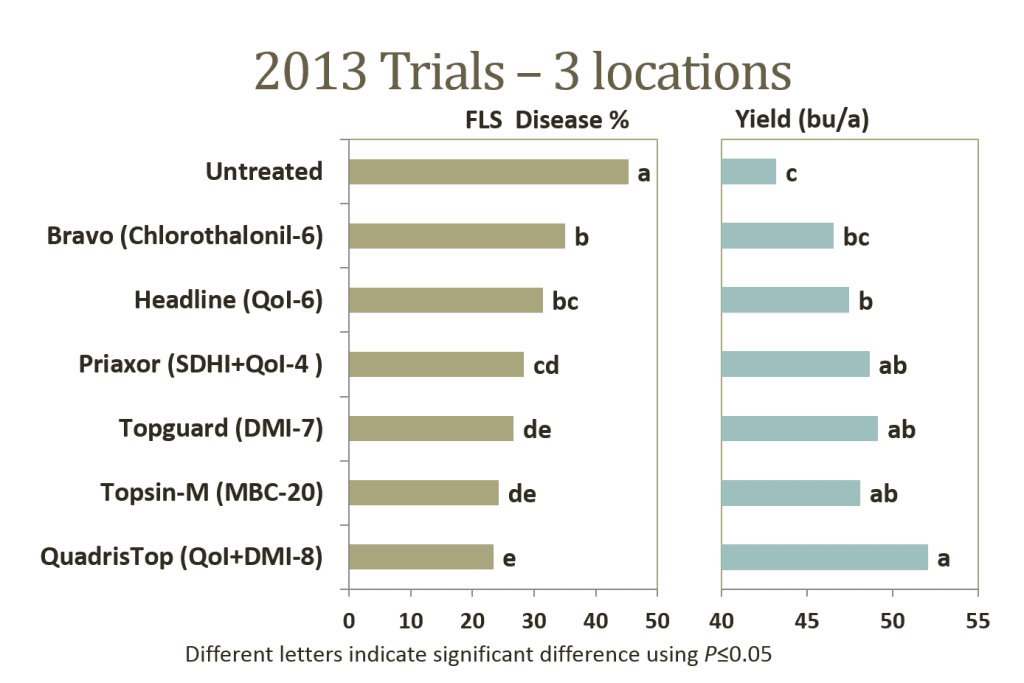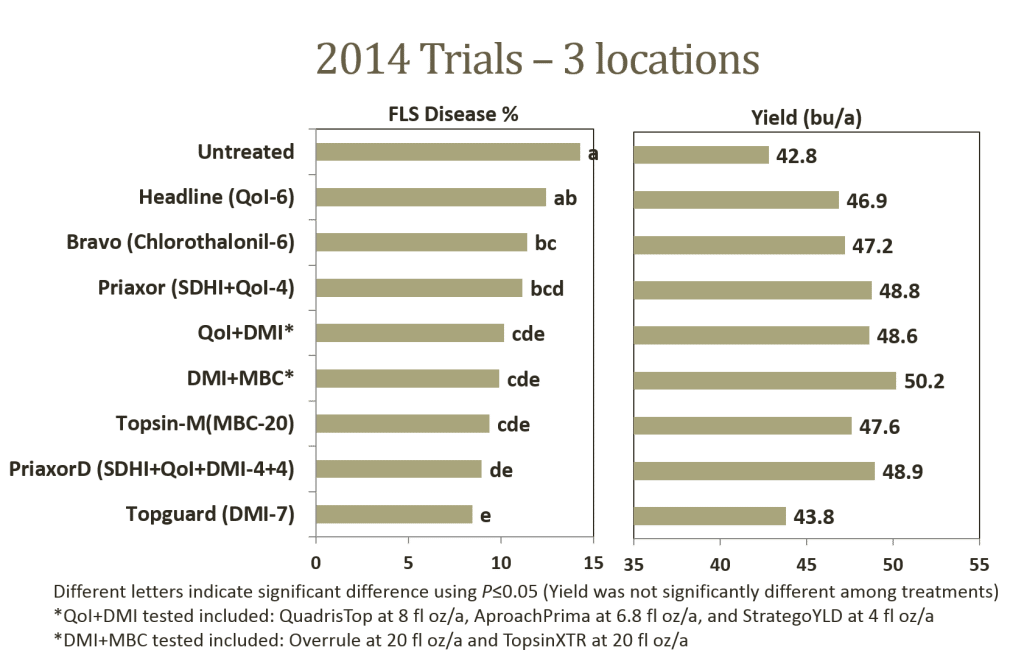As soybean fields in Tennessee reach reproductive growth stages, scouting for disease is critical to determine how necessary a fungicide application may be in protecting yield from disease.
The effect on yield from a disease are closely associated with environmental conditions, management practices, growth stage and susceptibility of soybean variety planted. Some diseases have characteristic symptoms that are easily identified, where others may not be specific and may be mistaken for weather or chemical damage (see a previous article from last year – Distinguishing Frogeye Leaf Spot from Chemical Injury in Soybean). Entire plant samples should be examined and when needed can be taken to your local extension county agent for identification.
Some common soybean diseases found in Tennessee include Frogeye Leaf Spot, Septoria Brown Spot, Cercospora Blight, Anthracnose, Southern Stem Canker, Charcoal Rot, and Sudden Death Syndrome. The hot, humid weather this season is conducive for disease especially Frogeye leaf spot.Descriptions of symptoms, pictures, and management options for these and other soybean diseases can be found at UTCrops.com (Soybean Disease and Nematode Identification Field Guide). Many diseases can be avoided by planting a disease resistant variety, regularly rotating to nonhost crops, and when warranted fungicide applications can be applied. UT research has previously indicated that under circumstances of high disease pressure and conducive environmental conditions, timing a fungicide application at R3-R5 (beginning pod develop to beginning seed development) often provides the most consistent yield protection.
Two diseases that are being monitored across the U.S. due to their importance include Soybean Rust (Phakopsora pachyrhizi) and strains of Frogeye Leaf Spot (Cercospora sojina) resistant to QoI/Strobilurin fungicide group. Updates and locations of these diseases can be found on http://sbr.ipmpipe.org or http://sbrusa.net. In the upper right of the website, in the drop down menu ‘Soybean Rust’ or ‘Frogeye’ can be selected to display data on these diseases.
No soybean rust has been found in any fields in Tennessee and has only been reported in Florida, Louisiana, and Texas. Frogeye leaf spot has started to develop in some Tennessee soybean sentinel plots and in research fields I’ve visited, but at low levels. Fields planted with a susceptible FLS variety, in continuous, no-till and under irrigation are at highest risk of yield loss. If FLS lesions are easily observed across the field during reproductive growth stages and conditions are conducive for disease a fungicide application will be beneficial.
A foliar fungicide efficacy table (Soybean Fungicide Efficacy Table found at UTCrops.com) was developed for major foliar soybean diseases in the U.S. by university researchers. With QoI or Strobilurin fungicide resistant strains of the fungus that causes Frogeye Leaf Spot disease, it is recommended to use a fungicide that has a mixed mode of action or one that is not a sole QoI/Strobilurin product. Free testing will be conducted this year to determine if Frogeye Leaf Spot disease in a field is caused by QoI/Strobilurin fungicide resistant strain of C. sojina more details can be found at UTcrops.com – Instructions for Frogeye Leaf Spot Samples – testing fungicide resistance (funding for testing provided by the Tennessee Soybean Promotion Board).
Below are data from research trials conducted as part of my graduate student, Alice Cochran project to evaluate the impact of different fungicides on C. sojina population diversity, QoI fungicide resistance, disease severity, and soybean yield. Results are from 3 locations in west TN from each year (2013-first graph, 2014-second graph). Results below are averages across different disease levels and environments. All trials were conducted with a FLS-susceptible variety. In 2013, QuadrisTop, Topsin-M, and Topguard resulted in the lowest disease and the greatest yield. Similarly in 2014 trials Topguard, PriaxorD, Topsin-M, and DMI+MBC products (TopsinXTR and Overrule) and QoI+DMI products (QuadrisTop, AproachPrima, and StrategoYLD) resulted in the lowest disease, although yield was not significantly different among treatments and untreated.


